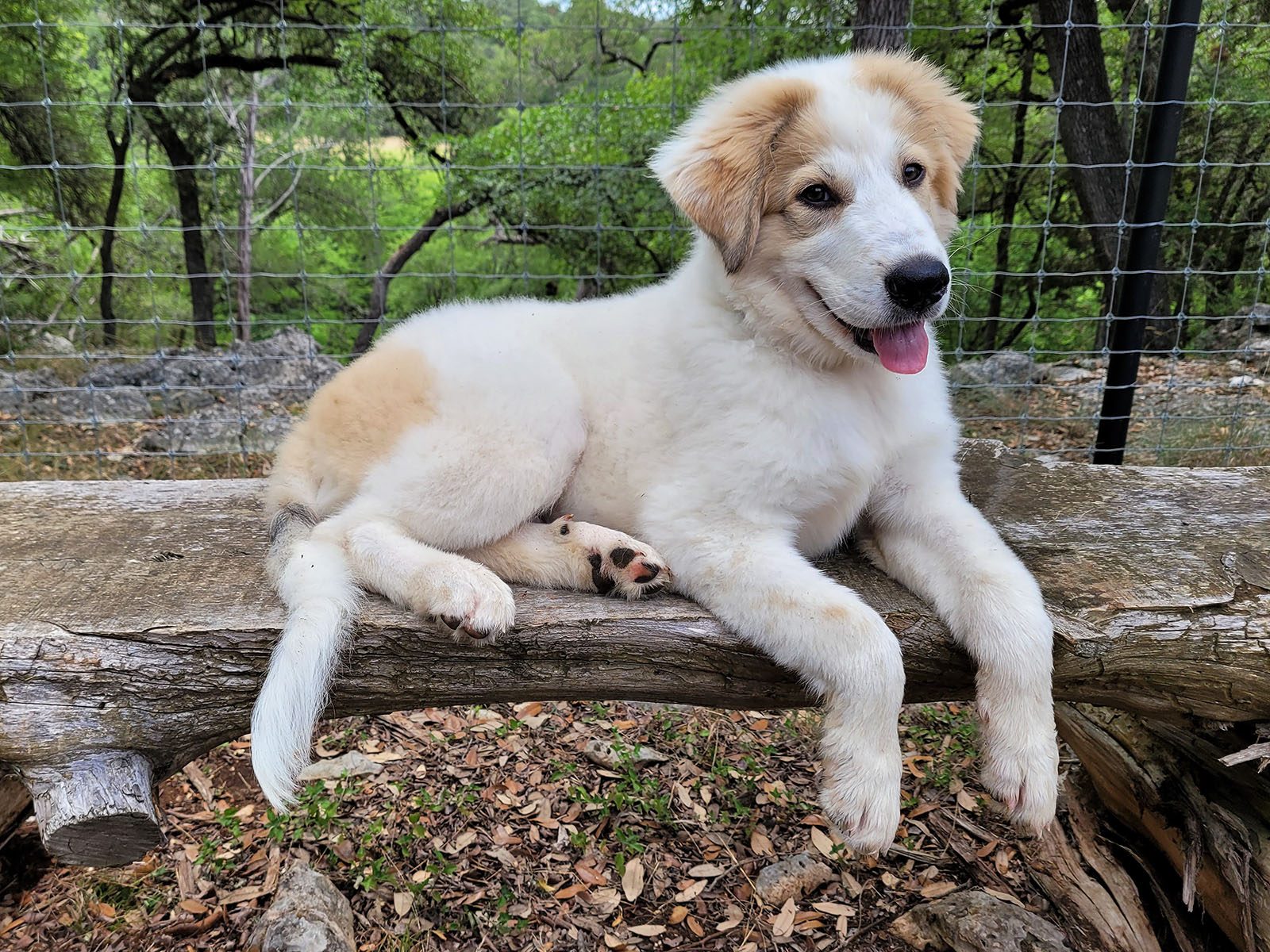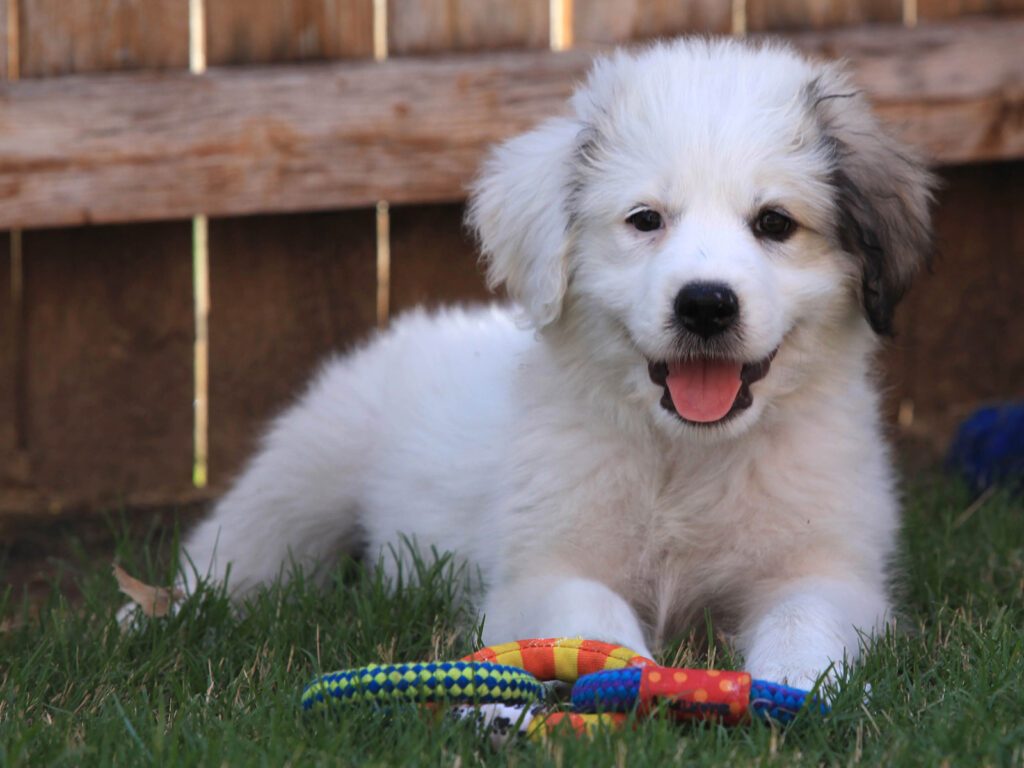The Great Pyrenees Breed
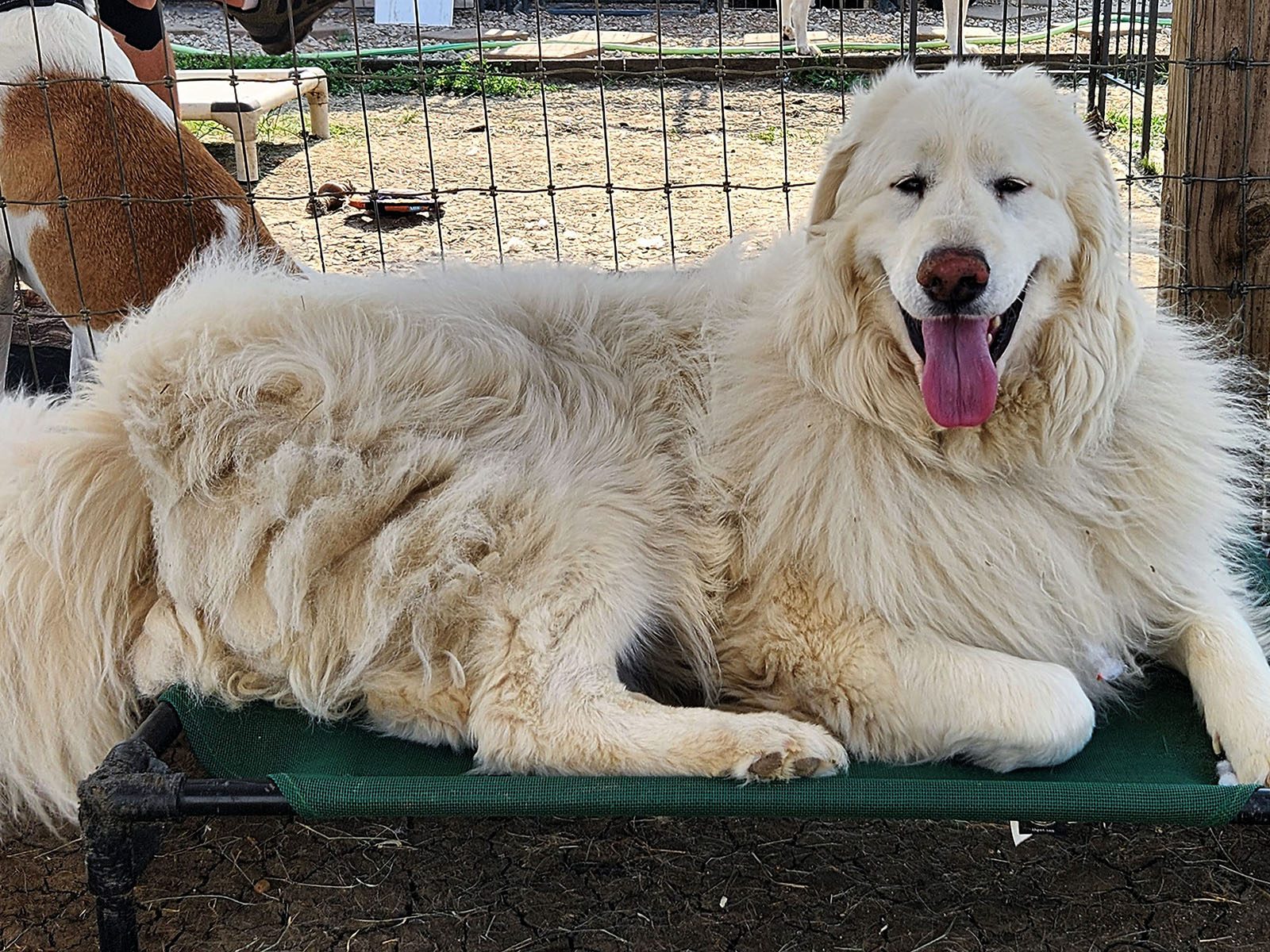
How big is BIG?
The average height for a Pyrenees is 25-32 inches. Female Pyrs will reach 80+ pounds, and males will reach over 100 pounds. These are averages for purebred Pyrs so adding in other breeds will change things. There are some that we call “Pocket Pyrs” who are closer to 50 or 60 pounds.
On the other side, we’ve had many male Pyrs that have topped out over 140 pounds. Our biggest Pyr was over 6 ft tall when standing on his back legs and weighed in at 180 pounds.
The Good, The Bad, and The Stubborn?
Pyrs were originally bred to live with and guard their flock at all times, adult Pyrs are known for their zen-like temperament and typically have an immense amount of patience and independence (some would say stubborn).
Typically considered to be “unteachable”, training Pyrs can be challenging. Their tendency is to perform obedience tasks slowly. Their indifferent attitude often leads people to refer to them, incorrectly, as unintelligent. Remember, adult working dogs spend much of their lives with the livestock and must make choices about their care with very little human guidance. His “I know better than you” attitude makes a lot of sense. We lovingly refer to this as “Pyr ears”.
Despite their indifferent attitude, Pyrs can be quite sensitive. They need a leader, not a boss, and a firm but patient training regimen. Because of their size, young Pyrs should be taught basic manners like not jumping on people, not stealing food, and walking properly on a leash.
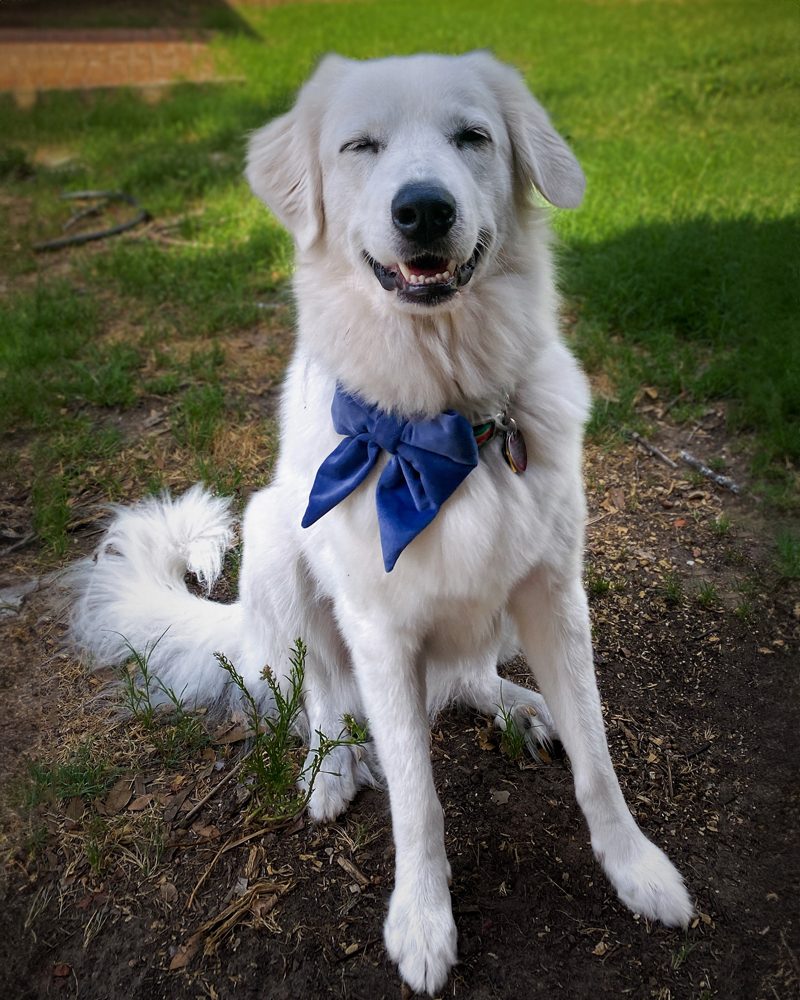
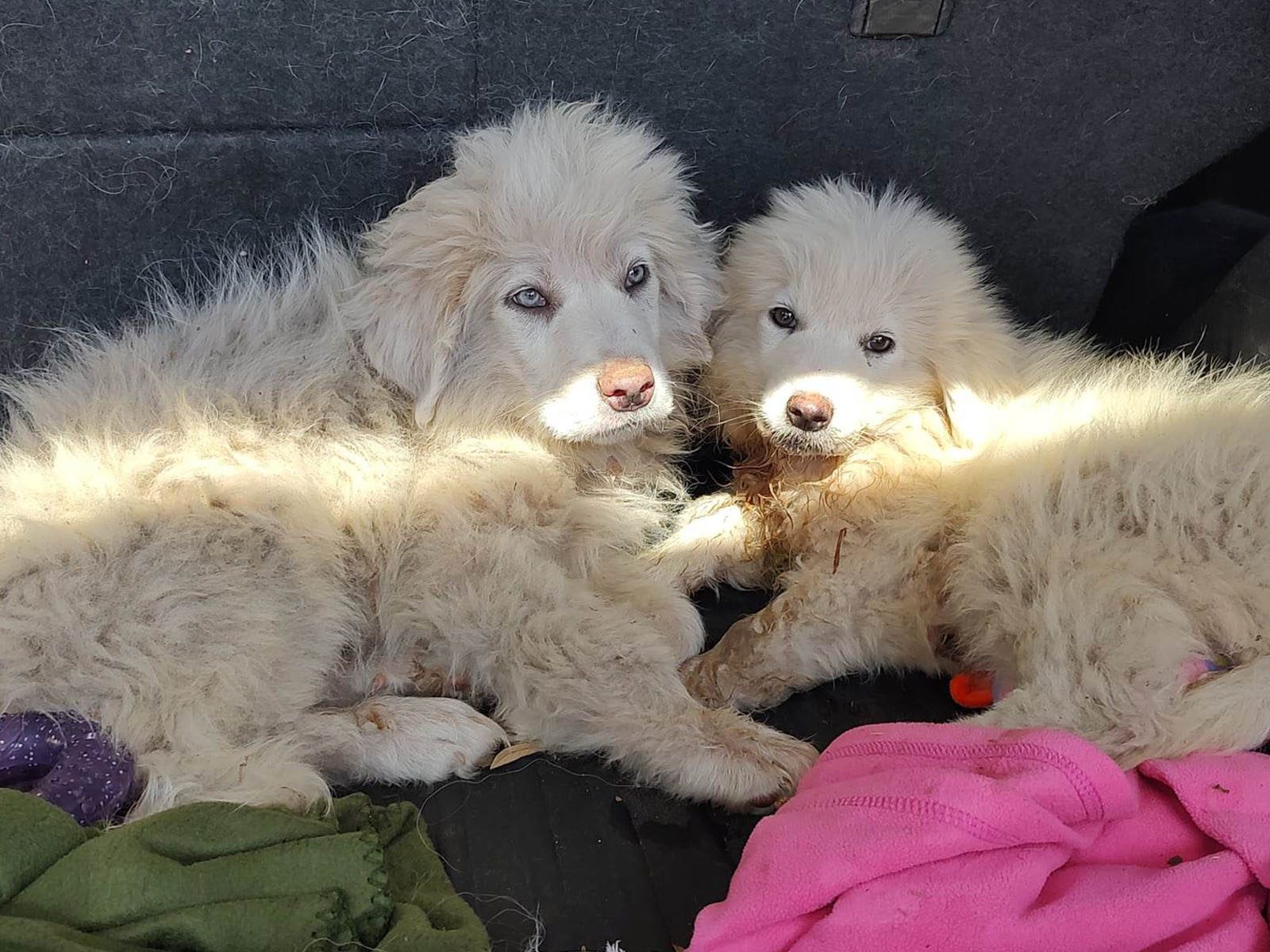
Working Dogs vs Pet Dogs?
While Pyrs have been bred for centuries for a very specific job, not all Pyrs are appropriate for this work, and we refer to the nonworking dogs as companion dogs.
One should not assume that just because their dog is a Pyrenees, even purebred, that they’ll naturally take to livestock guarding. Young livestock guardians do require training and help, both from a mentor dog and from their shepherd.
Even though they might not be suited to a livestock job, many companion Pyrs often retain a lot of the endearing qualities of their working brethren.
Exercise Needs?
Young Pyrs are active, but as they mature, most develop the quality referred to as a “living rug”. This means that most adult Pyrs don’t really need much exercise.
Less exercise doesn’t mean your Pyr doesn’t need a job. That job often translates to watching over their people instead of sheep (congrats, you are now your dog’s livestock!).
Even though Pyrs are large and were bred for farm life, many adapt quite well to apartment life.
What’s the fuss about fencing?
Often referred to as “dissa-pyrs”, another common trait among Pyrs is their tendency to wander. Again, keep in mind that these dogs were originally bred to tend livestock on farms that are hundreds of acres large. In fact, they were so large that fences weren’t really a necessity.
Pyrs without a job (and even some with one) will escape and wander for miles looking for something to do. In our modern world, this isn’t safe. Between cars, poisons and chemicals laying around, other animals, and people defending their own properties from nuisances, wandering can be downright dangerous.
The safety of our dogs is paramount, so yes, we are a bit particular about fencing.
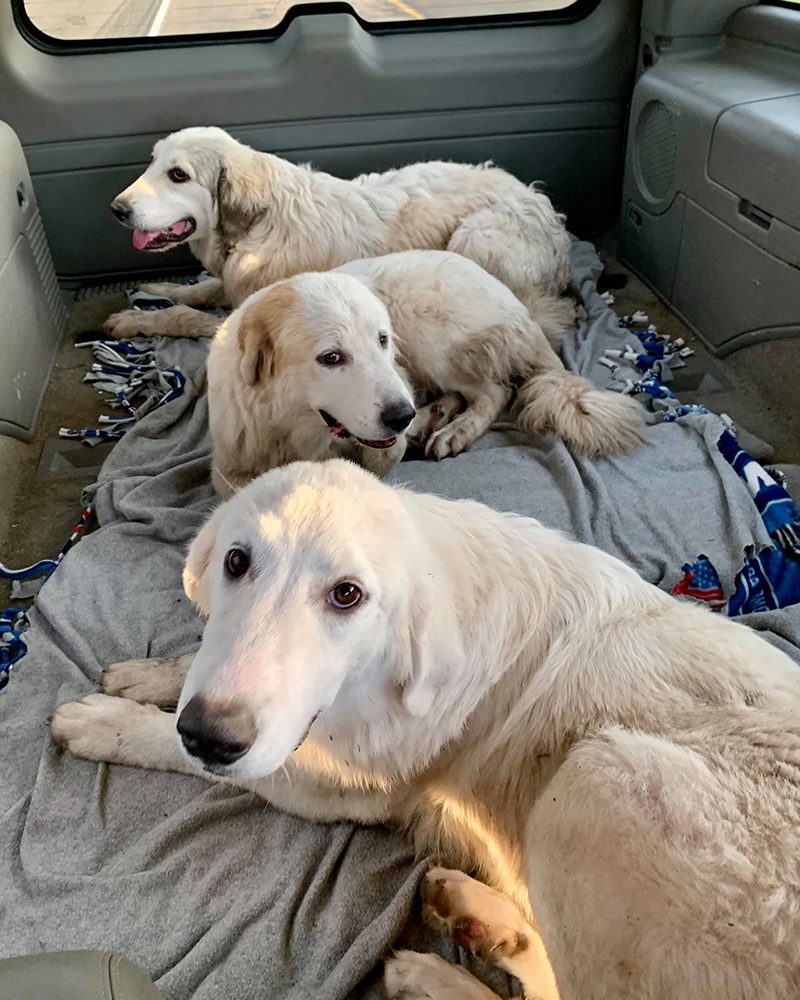

Weird and Interesting Facts?
Remains of the Pyrenees breed were found in fossils as old as 1800-1000 BC. Experts believe that Pyrs may have evolved from white mountain dogs from Asia Minor as long as 11,000 years ago. Despite their calm and overly relaxed appearance, Pyrs can be extremely fast when needed. They are known to be very good dogs with children who are big enough themselves to handle the affections of for a 100+# dog.
Due to their easy temperament, Pyrs make good emotional support dogs. In France and Belgium, Pyrenees were used to pull small carts to market and to deliver milk. They were used during World War 2 to haul artillery over the Pyrenees mountains. In 1675, the court of King Louis declared them the Royal Dog of France.
The Pyrenees, along with other large breeds, was used to revitalize the Saint Bernard and bring it back from near extinction after devastating losses due to natural disasters and disease in the late 1800s.
Frequently Asked Questions
Looking for some basic information? Find answers to commonly asked questions here.
We invite you to look at the list of Pyrs available for adoption. Read the biographies. Study the photos. But do not get your heart set on a photo. The “look” of a dog is not the key to a successful placement and a happy bond with you and your new Pyr.
Just because a Pyr looks exactly like the one you had as a child, does not mean it is the “best fit” for your family’s lifestyle. A dog might be the “look you want”, but if it has separation anxiety and your family is at work/school 8+ hours daily, you might be better off with a couch potato dog that enjoys napping in your absence!
The rescue program coordinator will assist in trying to match the right dog to the right family. Sometimes, you have a specific characteristic in mind (like the dog must be female).
If a suitable dog is not on the website currently, be patient! Rescue gets calls about new dogs ALL the time. The right one will come along. And hey, while you wait, how about fostering to get to know the breed?
- $400.00 for Pyrenees Puppies under 1 year
- $350.00 for Pyrenees 1+ years old
- $200.00 for Senior Pyrenees 7 years or older
- (plus processing fees for Venmo or Paypal)
Your prospective dog is most likely currently in a foster home. This means that the foster family has been working on housebreaking. It may not be 100%, but training is underway.
Be patient, and expect your new dog to make a mistake during the first few days. It may not know how to let you know it needs to go out. Ask the foster family if they have been using a signal or command.
Most Pyrs LOVE children, however, not all foster families have children, so sometimes we are not positive that our rescues have been exposed to children of all ages.
Bring the kids with you to look at the dog, and make sure the children have a healthy respect for the animal as well. Remember, a wagging Pyr tail can be a dangerous “weapon” to little ones who weigh less than the dog.
Shelters deal with mass quantities of dogs, so they have arrangements with veterinarians that allow them to get services performed for less money than a rescue organization will pay. Also, shelters receive funding from their municipalities or county agencies. TGPR does not have that luxury.
Adoption fees are charged to attempt to “recover” the medical expenses put into a dog. Dogs are altered, vaccinated, dewormed, flea treated, and heartworm tested prior to placement. Some require much more expensive care like surgeries.
The adoption fee is the only way (other than donations) that the rescue receives funding to defray the cost of medical care done on behalf of the dogs. Any additional funding we receive goes right back to the treatment of our dogs.
It depends on the age, activity level, and current state of health. Emaciated dogs can consume 12-16 cups of kibble daily, however, healthy, older, sedentary dogs may only eat 3 cups! Pyrs are not a high energy breed, so they will not “eat you out of house and home”.
Often the past history may be sparse. Some Pyrs are surrendered from previous owners (and we know their past and have medical & AKC records). Others are pulled from shelters and we have no history whatsoever.
Often, the age of your dog is an estimate, based on a veterinary assessment of the dog’s teeth and overall physical condition. So, just pick a birthday and celebrate, and count from this day forward!
It is highly recommended. You may think you are okay walking the dog outside on a leash to potty 6 times a day, but it will rain, and be cold, and are you going to be dedicated?
It is never permitted to allow your adopted Pyr to roam free without supervision. It is not permitted to chain them without supervision either. In fact, Texas has new tether laws that prevent you from tying out any dog for an extended period of time.
Fences protect other disease carrying critters from getting to your dog. If you want a Pyr you should consider a fence. Having made this statement, adopters without fences will be considered. You will be required to share your exercise program.
Weights range anywhere from 80-150 pounds! Females tend to be smaller. Many rescues come in VERY thin and can weigh under 80 pounds.
Pyr puppies are sometimes available in rescue. Their genetic background Pyrs is rarely certain. Although we do get puppies, most often our dogs are adult.
Pyr puppies are SO incredibly cute, however, they can be incredibly destructive until they are adults. Quite often our owner surrenders occur because the overgrown puppy has chewed stuff up, been neglected, never trained, or gotten bigger than “expected” and is now a “possession” rather than a beloved pet, then they get dumped onto rescue.
Puppies require training, love, patience, perseverance, and commitment! Make sure your family is equipped to handle that before you get that cute bundle of fuzz.
An older dog can bond with your family just as much, and can be easier to work with, especially if some good habits are already developed. A Pyr often makes a good babysitter! If you must have a puppy, please use a reputable breeder that supports rescue.
Yes. Simply yes.
We get calls to assist 6-7 dogs daily in the summer months. You may not see them often when walking in the parks and such, but they are around. And many are not being well cared for.
Our dogs often come in with ear infections and major skin issues from lack of proper care.
If you don’t decide to foster or adopt or volunteer, maybe you can donate. It is a tax deduction for you, and it could be a lifesaving medicine for a neglected Pyr!
General Information
The 3-3-3 Rule: It doesn't happen overnight.
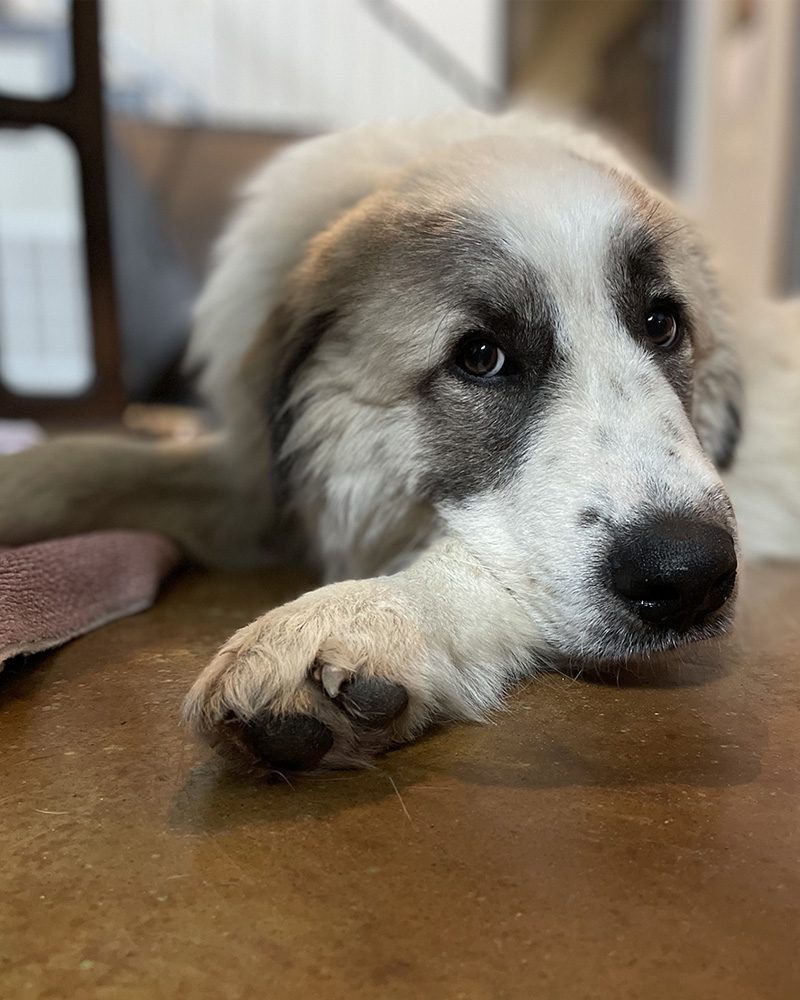
3 Days
to decompress

3 Weeks
to learn your routine
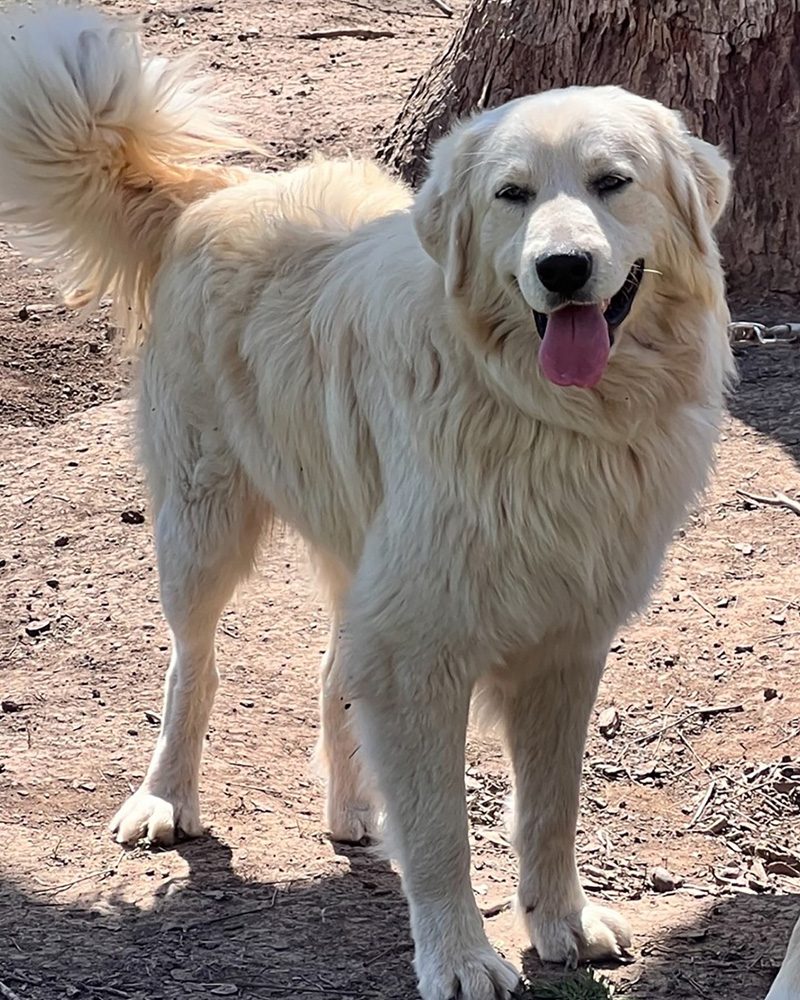
3 Months
to start to feel at home
The 3-3-3 rule is a protocol that we follow for allowing our pets to adjust. Created specifically with shelter and rescue dogs in mind, these rules can be applied to new puppies and any major change in our dog’s life.
A few of our Success Stories!
Cooper (fka Corporal)
This is Cooper (fka Corporal) born 5/1/2023 as part of the Guardian Litter!
When we decided to adopt a puppy, we had recently lost a dear four legged companion who had been with us for 14 years. My older shepherd howled every night at the loss of her companion, and my two toddlers absolutely grieved his loss.
Without knowing anything about pyrs—call it fate—I felt compelled to submit an application for a puppy from the rescue. We were soon contacted by the rescue about a puppy who was returned—through no fault of his own—and needed a home. Within 24 hours, I found myself driving an hour to meet an 18 pound, 8 week old poof. Our sweet Daphne and Cooper immediately bonded, and she has helped show him the ropes! Our children ADORE this dog! And me—while I was initially standoffish and still grieving the loss of my pet—Cooper pyr pawed my walls down and said “Hooman—I compel you to love me!” As for my husband who initially said no dogs in the bed, ask him where Cooper sleeps at night (hint: they share a pillow).
We can’t imagine our lives without Cooper. He is an incredible dog with goofy, stubborn, friendly, and when necessary, protective traits. When the time comes to search for a companion for Cooper, we will be adopting from Texas Great Pyrenees Rescue.
– Kubik Family (Dallas, TX)

From Bitsy to a Lady
Hello TGPR. It has been a year since we adopted Bitsy and she is doing great! We changed her name to Lady and since her rescue she has graduated from puppy school and knows all of the basic commands, even shake and roll over (when she wants to!).
We go on daily adventures, including the dog park which she loves and has even grown fond of swimming! She loves the hiking trails and is a great jogging partner. She still likes to play hide and go seek with my socks-but we are working on that one. Can’t imagine my life without her! Thank you!
– Nancy Layden

Pearl's Story
Pearl came to TGPR after being hit by a car. She was found laying in a ditch, dying, and was taken to a vet. The vet knew Pearl was going to need a specialist so she told her rescuer about TGPR. TGPR took Pearl into our program and have provided for her extensive medical needs. Pearl needed a very intensive leg surgery where they put in plates and pins to basically rebuild her leg. It took over 6 months to heal from that and be able to walk. Pearl was also positive for Heart worms and not spayed.
In total, it took nearly a year for all of Pearls medical needs to be met, but now she is a stunningly beautiful girl and does not have even the slightest limp. You would never know she was injured just by looking at her. Pearl was adopted into a great forever home. Her life went from neglected and ignored to pampered and adored. She even has a couple of brothers to play with and gets to go on regular walks.
– TGPR Volunteer
Couldn't stop at just one!
We adopted two pups from The Texas Great Pyrenees Rescue. We adopted Anthem, she is the yellow/tan pup in the pic, she is a Pyrenees mix. More mix than pyr. We got her at 9 weeks, she is now 3 years old. Then we adopted Finn, he is the big, white pluff. We got him at 6-7 weeks old, he is now two. Awesome rescue to deal with, easy. The people, that make the TXPyr rescue, have hearts of gold. They love these dogs.
We love TXGreat Pyrenees Rescue!
– Anthem’s Adopters

Sassafras - Her rescue story
I received a call from the Houston SPCA about a cruelty case. Sassafras had been tied to a tree with no food or water at her owner’s residence. She had resorted to nibbling on roots and dirt around her. She was seized and brought to the SPCA. They were concerned for her. She was not happy. They could not really tell how old she was because she was so emaciated. It is very difficult to adopt out large breed dogs, especially when they do not look their best. Sassafras certainly was not an attractive dog at the time and like many Great Pyrenees was not thriving in a kennel environment.
I brought her home and Harry Snoodles, my rescued Great Pyrenees, immediately took charge. She was shown the location of the full food bowl and the massive water bowl. He also gave her a tour of the yard, showing her “ropes” so to speak, where to dig, where to run along the fence, where she could drink out of the decorative fountain, and frankly he taught her how to be a dog again. Sassafras gained at least 30 pounds in the first month at my home. Most importantly, she found her happy dog self. She learned to be a confident, sweet, smiling Great Pyrenees while she was physically becoming beautiful by gaining weight and growing a full, fluffy coat. As it turned out, she was a very young Pyr and was adopted by a loving family.
– Cynthia Nesser, TGPR Volunteer
ADOPTED!
From Longest in Rescue to Home Furever!
Well, it’s official. I didn’t last very long as being a foster mom to Miss Scarlett. She has been adopted by…….drum roll ………ME!! It’s a foster fail and we couldn’t be happier!
Thanks to Monique Ruiz and Theresa Dickson from TGPR for introducing me to Scarlett and to the love of my life William Stockton, who used his charm and gift of persuasion to wear me down and convince me that she would blossom even more at our home, which I agreed.
In reality it was my latest Scarlett post that convinced me. After I hit send, I thought “what if someone actually applies to adopt her?”. I knew right then and there that she had already found her furever family and I couldn’t let her go. I’ve spent the last 6 months visiting her while being in boarding and working to gain her trust and in the process, I bonded with her too. It’s not to say that another family would have loved her as well, but she chose me. So there you have it.
Welcome Home Miss Scarlett Stockton . The only Scarlett post from now on are family posts. This is my life, and I love it!
– Maria and William Stockton

